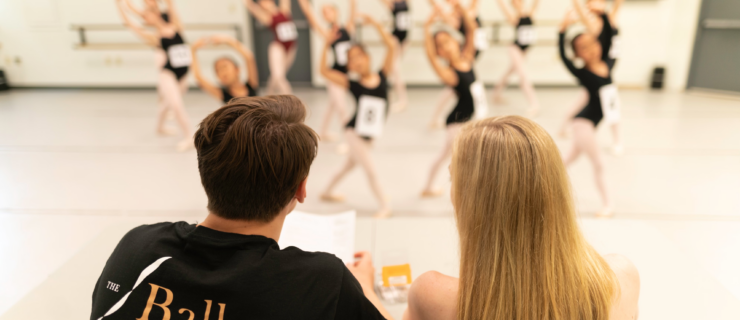The Little Mermaid comes to Broadway!
With Disney lining up more and more productions on Broadway, it was only a matter of time before The Little Mermaid appeared on the Great White Way. The show officially opened in NYC on December 6, so get in line now: It promises to be jam-packed with innovative costumes, water-like set pieces and extra accessories sure to do the movie justice.
In case you’re the one in a million who has yet to see the popular 1989 flick, here’s the scoop: Ariel, a mermaid princess whose biggest dream is to become human, makes a deal with a sea witch to win the prince she loves. Fans of the film—which picked up two Oscars, one Golden Globe and a Grammy, all in major music categories—can expect their favorite tunes paired with fresh choreography, makeup, set pieces and more.
Tim Federle, a California-born dancer who grew up and trained in Pittsburgh, PA, plays a wide range of roles in the show, including “Sailor,” “Mer-man,” “Seagull,” “Catfish,” “Chef” and “Lily Pad,” in addition to understudying the roles of “Scuttle” and “Jetsam.” Here, Federle gives DS a peek into what fans can expect from the world under the sea.
DS:
How did you score your spot in The Little Mermaid, and what were the auditions like?
Tim Federle:
I went to an invitation-only audition, and my agent helped me get into a small audition group. We were taught a dance and had to show different skills, like double pirouettes and Russians. We also had to tap—that’s the area I’m the most comfortable with.
Then, we had to use Heelys—you know, the shoes with the wheels on the bottom? Disney had 100 dance shoes custom-made to use the Heelys technology, and we had to roll around on them and show that we could use them. I eventually had to “Heely” in front of the creative team, and it wasn’t easy. It’s a lot harder than kids make it look!
After that, Disney sent over a script, and I read for them. At the audition, someone said to me, “If we don’t use you, know that we think you’re great.” When someone says that, you figure you didn’t get the part, but I had three callbacks.
Right before Christmas 2006, I literally got the best Christmas gift ever. They called to tell me that I’d gotten the role!
DS: When did you start rehearsing, and what was the process like?
TF:
We started rehearsals in May 2007. First, we sat around a table and read through the script, and it was really fun because everyone knows songs like “Under the Sea”—sometimes I can’t believe I actually get paid for this!
Next, we worked on dance vocab, which refers to experimenting with how the choreographer styles the steps—like taking a basic pirouette, but doing it with a flexed foot instead of a pointed foot in passé. Then we started learning chunks of choreography. The process was great because everyone had input, and everyone could give the choreographer feedback or suggestions.
DS:
How did the out-of-town performances go?
TF:
We went to Denver for two-and-a-half months, and it went really well. The goal of performing out of town is to discover what in the show can be improved before the NYC opening, so we did a lot of rewriting and some of the steps and costumes changed. Our set is so big that after our out-of-town performances, it took three weeks to move it back to New York.
DS: What does the set look like?
TF:
George Tsypin, a well-known designer, did the set. It’s suggestive of water—some of the pieces are made of Plexiglass—but there isn’t any actual water. In Act Two, everything is larger than life because that’s how Ariel sees things. Her view of the world is different because she’s a mermaid, so her sense of reality is heightened. We try to do that with the show, and it gives great visual effects.
DS: What’s the choreography like?
TF:
It ranges from Broadway tap dancing as interpreted by a seagull (so traditional time-steps, but with wacky, bird-like flapping arms) to dancing like you’re underwater. The sea sequences are achieved with fluid arms, Heelys and of course the costuming. There’s an interplay between hitting the movement sharply and moving through a line in a manner that suggests being underwater.
DS: What can people expect from The Little Mermaid on Broadway?
TF:
Magic. This is such an iconic title—we have little girls in the audience who are three years old and wearing their “mermaid” outfits, and we have dads who love the show, too. There’s a lot of positivity, and anyone who loved the cartoon will love the Broadway show—it has a lot of star power.



